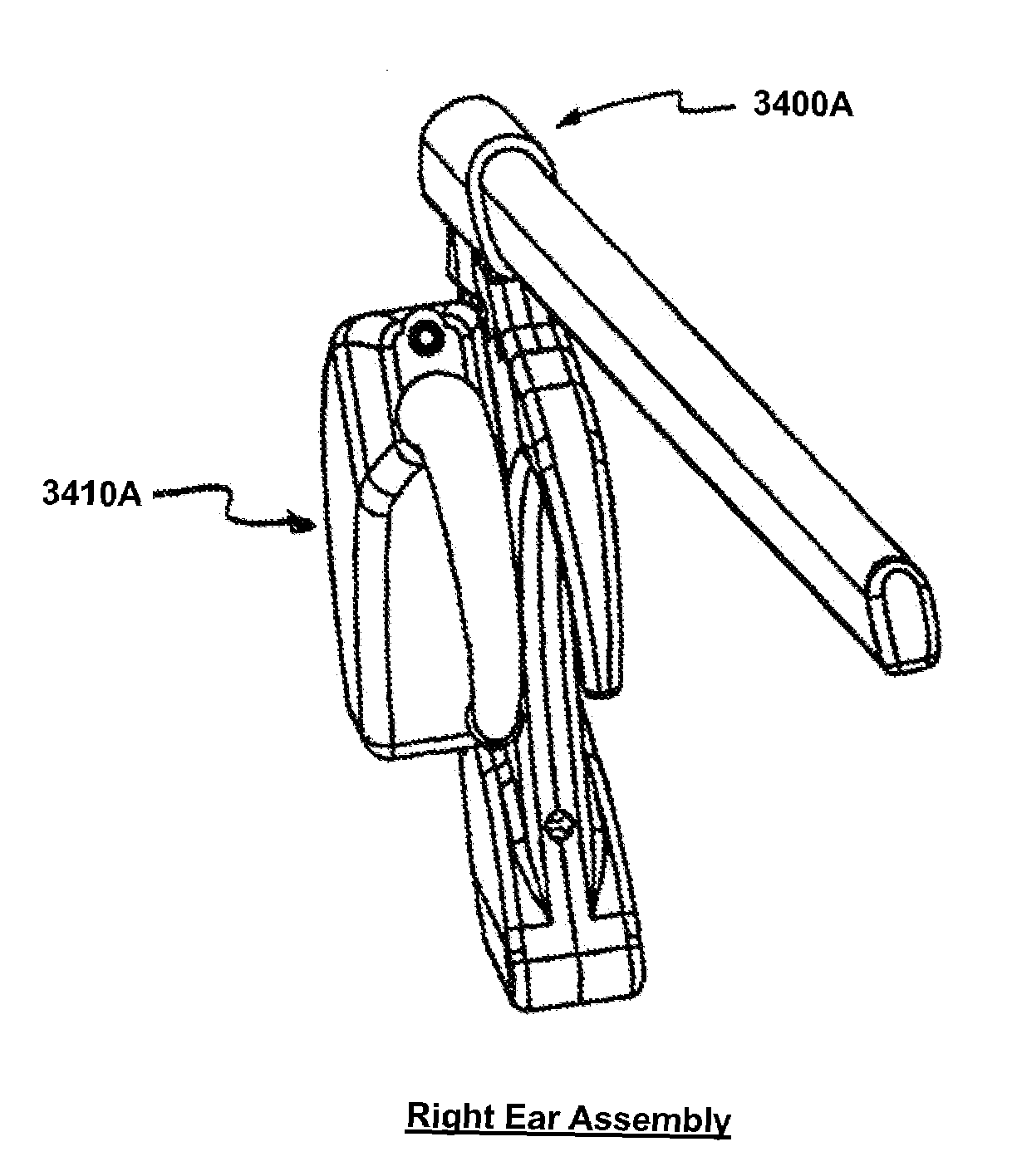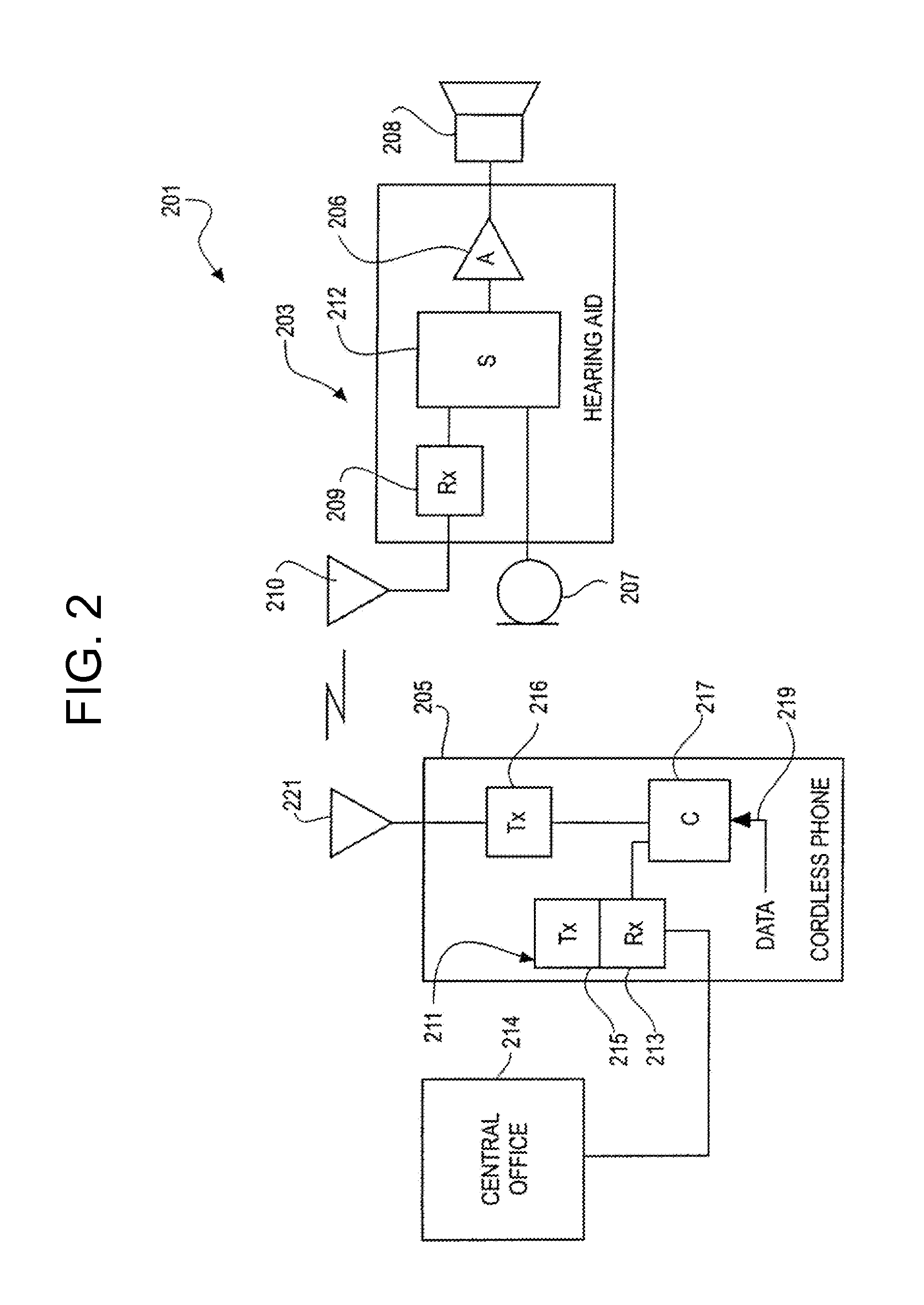Multi-coil coupling system for hearing aid applications
a coupling system and hearing aid technology, applied in the direction of deaf-aid sets, electrical equipment, electronic input selection/mixing, etc., can solve the problems of high background noise, hearing impaired individuals often have great difficulty carrying on normal conversations in noisy environments, and may require a hearing solution
- Summary
- Abstract
- Description
- Claims
- Application Information
AI Technical Summary
Problems solved by technology
Method used
Image
Examples
Embodiment Construction
[0057]FIG. 1 is a block diagram of an overall hearing improvement system 101 of the present invention. A transmission detection and switch system 103 receives signals from both a primary audio source 105 and a secondary audio source 107. The primary audio source 105 may be, for example, a directional or omnidirectional microphone located in a hearing aid. The secondary audio source 107 may be, for example, a directional microphone / transmitter mounted on eyeglasses (or otherwise supported by a hearing aid user), a television or stereo transmitter, a telephone or a microphone / transmitter combination under the control of a talker. In one embodiment, the secondary audio source 107 utilizes a wireless transmission scheme for transmission of signals to the transmission detection and switch system 103. In another embodiment, the secondary audio source 107 is wired to the transmission detection and switch system 103.
[0058]In operation, the transmission detection and switch system 103, which...
PUM
 Login to View More
Login to View More Abstract
Description
Claims
Application Information
 Login to View More
Login to View More - R&D
- Intellectual Property
- Life Sciences
- Materials
- Tech Scout
- Unparalleled Data Quality
- Higher Quality Content
- 60% Fewer Hallucinations
Browse by: Latest US Patents, China's latest patents, Technical Efficacy Thesaurus, Application Domain, Technology Topic, Popular Technical Reports.
© 2025 PatSnap. All rights reserved.Legal|Privacy policy|Modern Slavery Act Transparency Statement|Sitemap|About US| Contact US: help@patsnap.com



